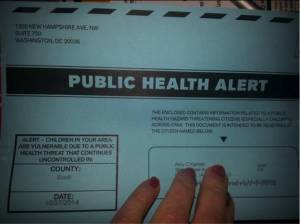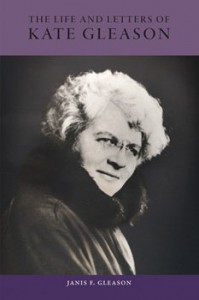Misrepresenting Susan B. Anthony on Abortion
Misrepresenting Susan B. Anthony on Abortion
by Harper D. Ward1
Originally posted Feb 15, 2018
A controversy has developed over the claim by some anti-abortion activists that Susan B. Anthony, the best known of the early women’s rights leaders, would support their movement if she were alive today. This claim is based to a large extent on “Marriage and Maternity,” an article written anonymously that disagreed with calls in a medical journal for laws against abortion but nonetheless deplored it as “child-murder.”2 It appeared in The Revolution, a sixteen-page, weekly, women’s rights newspaper that Anthony published from 1868 to 1870 with Elizabeth Cady Stanton and Parker Pillsbury as editors. This article, these activists claim, was written by Anthony herself. Their evidence? It was in her newspaper, and it was signed “A.”
An examination of every page of The Revolution reveals many articles signed “S.B.A.” but only a handful signed “A.” The latter articles contain some uncomfortable surprises for those who want to believe that Anthony wrote them. One of them, for example, expressed disagreement with Scientific American magazine on a technical controversy about mechanics, hardly Anthony’s field of expertise. Another article by “A.” quarreled with The Revolution‘s position on capital and labor, which lead to a debate in a subsequent issue in which the editors addressed its author as “Mr. A.”
Clearly there is a fatal flaw in the claim that Susan B. Anthony was the “A.” who wrote “Marriage and Maternity.” Her newspaper published a large number of articles that were contributed by its readers on a variety of topics, many of whom signed themselves anonymously, often with a single initial, including “A.” Nevertheless, some anti-abortion activists use this “child-murder” quote by “A.” to give the impression that Anthony had expressed opinions that would support their cause. One of their organizations, the Susan B. Anthony List, is even named after her.
Claims about “A.” and “Marriage and Maternity”
In an article called “Susan B. Anthony: Pro-Life Feminist,” Marjorie Dannenfelser, president of the Susan B. Anthony List says, “Most logical people would agree, then, that writings signed by ‘A’ in a paper that Anthony funded and published were a reflection of her own opinions.”3 (This mistaken idea will be examined in more detail below.) She goes even further in another article, saying, “The proprietor and business manager of the early feminist newspaper The Revolution, Anthony published many articles under a simple pseudonym, ‘A.’ In an article entitled ‘Marriage and Maternity,’ Anthony referred to abortion as ‘the horrible crime of child-murder.'”4
Mary Krane Derr’s book ProLife Feminism reprints the entire “Marriage and Maternity” article under the heading “‘A Dreadful Volume of Heart-Histories’ by Susan B. Anthony.” Derr admits in a note at the back of the book that the article was actually signed “A.”, not “Susan B. Anthony,” but argues that it must have been written by Anthony.5
Joseph Dellapenna, a professor of law at Villanova University, discusses this article in a book called, ironically, Dispelling the Myths of Abortion History, in which he inaccurately describes “Marriage and Maternity” as “an editorial by Susan B. Anthony.”6 Displaying disturbingly poor scholarship, he gives no indication that this article (which was not an editorial) was actually signed anonymously or that academic experts on Anthony disparage the idea that she wrote it.
These claims certainly have not gone unchallenged. Ann D. Gordon, the leading academic expert on Susan B. Anthony, and Lynn Sherr, a journalist and author of a biography of Anthony, have sharply criticized assertions that Anthony wrote “Marriage and Maternity”, saying that she has simply been “imagined to be its author.”7 Tracy Thomas, a law professor at the University of Akron, also disputes this claim in a sixty-eight page academic paper called “Misappropriating Women’s History in the Law and Politics of Abortion,” which discusses the misrepresentation of the beliefs of early women’s rights leaders by some members of the anti-abortion movement.8
Who Wrote for The Revolution?
The Revolution was not created to express Susan B. Anthony’s point of view only. On the contrary, one of its goals was to provide a forum in which its readers could exchange opinions from a variety of viewpoints. Not surprisingly, The Revolution contains articles written by many people, often anonymously. Some of the anonymous articles were signed with a pen name, such as “Argus” and “Alpha,” while others were signed with one or more initials.
The Revolution cheekily declared that, “those who write for our columns are responsible only for what appears under their own names. Hence if old Abolitionists and Slaveholders, Republicans and Democrats, Presbyterians and Universalists, Saints, Sinners and the Beecher family find themselves side by side in writing up the question of Woman Suffrage, they must pardon each other’s differences on all other points.”9 This policy applied not only to contributions from the newspaper’s readers but also to its editors, who were free to express their own opinions even if that led to disagreement between them in the newspaper’s pages.10
Elizabeth Cady Stanton and Parker Pillsbury, the newspaper’s editors, provided a large part of The Revolution‘s content. Stanton was a close friend and co-worker of Anthony. Together they provided leadership to the women’s rights movement for decades. Pillsbury was an experienced editor who had worked for other progressive newspapers, including the National Anti-Slavery Standard. Stanton and Pillsbury signed their articles in The Revolution with their initials, “E.C.S.” and “P.P.”, or with their full names.
Susan B. Anthony, who handled the business side of the newspaper, provided less of its content. Even so, she produced over sixty items, many of them short notices about the paper itself, such as appeals for assistance with getting new subscribers. A careful examination of every page of The Revolution shows that she wrote fifty-four items that were signed “S.B.A.” and another fifteen that were signed with her full name.11 As will be demonstrated below, she did not sign any articles as “A.”
Articles Signed with One Initial
Anonymity was necessary for those contributors whose personal circumstances prevented them from being publicly associated with The Revolution. Among the small army of correspondents who wrote articles for The Revolution anonymously, many signed themselves with a single initial, as the sampling below illustrates. Susan B. Anthony herself obviously had no such need for anonymity.
- “Marriage and Maternity” by A, July 8, 1869, page 4
- “The Working Women’s Convention” by B, March 17, 1870, page 172
- “Woman as Soldier” by C, February 11, 1869, page 86
- “Brussels—The Riots” by D, April 23, 1868, page 251
- “Gallery Reserved for Women” by F, April 7, 1870, page 213
- “The Weaker Sex” by G, February 10, 1870, page 90
- “Inalienable Rights vs. a Few Popular Wrongs” by H, February 18, 1869, page 102
- “Miss Anthony at Decatur, Ill” by J, April 7, 1870, page 213
- “Reasons Why Some Marriages Are Unhappy” by L, April 22, 1869, page 243
- “Ventilation” by M, June 11, 1868, page 354
- “Another Lady Preacher” by Q, November 11, 1869, page 291
- “The New York City Woman’s Suffrage Association” by R, April 21, 1870, page 251
- “New Hampshire Women” by T, March 12, 1868, page 157
- “A Tobacco Factory” by U, January 20, 1870, page 39
- “I’m Glad You Said It” by V, January 21, 1869, page 36
- “Woman’s Parliament” by W, November 18, 1869, page 308
Items That Were Signed “A.”
According to Dannenfelser, as quoted above, “Anthony published many articles under a simple pseudonym, ‘A.'” in The Revolution. That statement is completely false.12 There are only eight items in The Revolution that were signed that way, and none of them can reasonably be attributed to Anthony. They are as follows, listed by their date of publication:
1. “Mechanical Science: One Revolution or Two?”, March 26, 1868.13 This article by “A.” takes issue with the Scientific American‘s explanation of one aspect of what happens when one wheel revolves around the rim of another. No one would claim that Susan B. Anthony ever challenged the Scientific American on an issue of mechanics.
2. “Practical Science”, April 9, 1868.14 Clearly written by the same person, this article continues the objections to the Scientific American‘s explanations of mechanical issues that had appeared two weeks earlier.
3. “The Patent Office”, May 21, 1868.15 This article calls for “at least four-fifths” of the examiners in the U.S. Patent Office to be removed due to incompetence, apparently based on the author’s experience with them. No one would claim that Anthony had any interest in the Patent Office or would call for mass firings. It is possible that this “A.” is the same mechanically-inclined person who had written the March 26 and April 9 articles listed above.
4. “Woman and Finance”, October 29, 1868.16 This article takes issue with an editorial in The Revolution called “Largest Store in the World,” which says that capital exerts a cruel dominance over labor.17 Not so, this “A.” says, “Capital is not, nor can it be antagonistic to the interests of labor.” Furthermore, the author asserts, it is misguided to try to influence the price of labor, which should be set by the open market. These ideas conflict with Anthony’s known beliefs and can be seen as a criticism of actions she had just taken. The Revolution had recently announced that Anthony had organized a meeting in the newspaper’s offices to establish the Working Women’s Association, whose goals included the use of labor union tactics to win higher wages for women.18
In a subsequent issue, The Revolution printed letters from readers who disagreed with this article. Their letters were preceded by an editorial comment that referred to its author as “Mr. A.”19
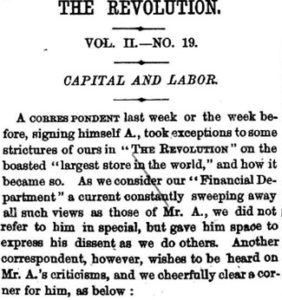
Actually, there is reason to believe that the three preceding articles by “A.” also were written by a man. The Revolution enthusiastically printed stories about women who were engaging in activities that had been traditionally restricted to men, and it was keen to refute “the slander that there are no women’s names in the Patent Office reports.”20 If women were challenging the Scientific American on issues of mechanics and interacting with the Patent Office, The Revolution would have found a way to tell the world about it, but it did not do so.
5. “A Washington Convert”, March 11, 1869.21 This writer, a woman, describes herself as a recent convert to the women’s rights movement. Obviously, this “A.” is not Anthony.
6. Untitled letter, June 3, 1869.22 This “A.” slyly implies that women’s rights advocates are being unreasonable. Obviously this is not Anthony either.
7. “Marriage and Maternity”, July 8, 1869.23 This writer deplores abortion as “child-murder” while disagreeing with an article in the Medical Gazette that called for laws to suppress it. The article includes fervently religious language (“… thunder in her ear, ‘Whoso defileth the body defileth the temple of the Holy Ghost!'”), a sure sign that it was not written by Anthony, who avoided such religiosity. (Elizabeth Cady Stanton, her close friend, described Anthony as an agnostic.24) This is the article that some anti-abortion activists claim was written by Anthony, hoping to convince people that she supported laws to suppress abortion, the very thing, ironically, that this “A.” advised against.
8. “Suffrage”, December 9, 1869.25 This “A.” says that women “ought to be allowed the right of suffrage” even though “men may not admit women into competition with themselves in the various occupations of society, may deny their intellectual and physical ability.” Anthony would not have used this approach to support women’s suffrage. To her, women’s rights were to be recognized and respected, not “allowed,” which would imply that it was proper for men to determine what rights women should have. She also would not have referred to disparaging opinions about women’s abilities without adding some sharp comments.
These eight are the only articles in The Revolution that were signed “A.” The one identified by The Revolution as having been written by “Mr. A.” could not possibly have been written by Anthony, and the contents of the others are not consistent with what we know about her either. Anthony did not write any of the articles that were signed “A.”
To continue making the claim that Anthony referred to abortion as “child-murder,” one would have to claim that she wrote “Marriage and Maternity” and signed it as “A.”:
- despite signing herself as “S.B.A.” or “Susan B. Anthony” well over sixty times elsewhere in her newspaper and not as “A.”,
- despite the fact that the world’s foremost authority on Anthony disparages the idea that she wrote that article or signed any of her articles as “A.”,
- despite the confusion she would create by signing her name with a single letter, a device used by many of The Revolution‘s anonymous contributors,
- despite the extreme confusion she would create by signing her name in precisely the same way as an anonymous contributor who was already familiar to her readers as a man whose views on capital and labor were contrary to hers.
Another Misrepresentation
“Marriage and Maternity” is the best-known example of a text that has been misrepresented by some members of the anti-abortion movement, but it is not the only one. Feminists for Life, an anti-abortion group, distributes misleading campaign materials that claim to quote Anthony as saying that she had worked to “bring about a better state of things for mothers generally, so that their unborn little ones could not be willed away from them.”
Presenting this as a direct quote by Anthony is disingenuous. This statement comes from the memoirs of Frances Willard, president of the Woman’s Christian Temperance Union. Willard wrote that Anthony had spoken “after this fashion” during a conversation, making it clear that she was not attempting to replicate exactly what Anthony had said. Unfortunately, Willard’s reconstruction of that conversation, which is more extensive than what is quoted here, has Anthony speaking in a sentimental and ingratiating way that is completely unlike the way she actually spoke.26
In any case, Anthony is not referring to abortion here but to laws that gave husbands almost complete control over the family. A husband had the legal right to specify in his will that “his” children should be taken away from their mother if he died. As Matilda Joslyn Gage, Anthony’s colleague, said, “the father is assumed to be the sole owner of the children, who can be bound out, willed or given away without the consent or even the knowledge of the mother.”27 Anthony was protesting the injustice of laws that permitted a husband to “will away” even the unborn child of his pregnant wife.
No Better Evidence
Why would anyone attempt to use such unwieldy and farfetched examples as evidence that Susan B. Anthony supported the criminalization of abortion? Why base so much of your case on a quote from an anonymous “A.” (who possibly was a man)? Why print Anthony’s picture on anti-abortion posters along with a misleading “quote” that actually is someone else’s imprecise memory of what Anthony said about unjust marriage laws? Why not find better quotes among Anthony’s actual speeches and writings? The answer is obvious: there are no better quotes. There were some early women’s rights activists who said that abortion should be illegal, but Anthony, who is by far the best-known, was not one of them.
Researchers have identified only two occasions on which Anthony even mentioned abortion: during one of her speeches and in her diary. Neither supports the claims that some anti-abortion activists are making.
On the first occasion, in a speech called “Social Purity,” she deplored the harm to family life caused by the “monster evil” of alcohol abuse, saying, “The prosecutions on our courts for breach of promise, divorce, adultery, bigamy, seduction, rape; the newspaper reports every day of every year of scandals and outrages, of wife murders and paramour shooting, of abortions and infanticides, are perpetual reminders of men’s incapacity to cope successfully with this monster evil of society.”28 Some anti-abortionists claim that Anthony’s allusion to abortion in this speech is evidence that she opposed it. That can’t be right because Anthony also alluded to divorce in that same sentence yet later in the speech spoke caustically of those who opposed it, saying, “We have had quite enough of the sickly sentimentalism which counts the woman a heroine and a saint for remaining the wife of a drunken, immoral husband.” Listing abortion as one of the consequences of alcohol abuse is not the same as calling for it to be outlawed.
Anthony mentioned abortion again later in that speech, this time in the context of the injustice of laws that intimately affect women but are made and enforced by men: “The statutes for marriage and divorce, for adultery, breach of promise, seduction, rape, bigamy, abortion, infanticide—all were made by men. They, alone, decide who are guilty of violating these laws and what shall be their punishment, with judge, jury and advocate all men, with no woman’s voice heard in our courts.” What practical difference would it make if women participated equally in the making and enforcement of such laws? Anthony didn’t say specifically. But isn’t it clear that she expected it to lead to increased sympathy and consideration for women in these situations?
Anthony’s other reference to abortion was a very brief entry that she made in her diary after learning that her sister-in-law had been gravely ill for weeks because of a self-induced abortion, a not uncommon practice at the time that involved primitive and often dangerous techniques. Anthony wrote, “She will rue the day she forces nature,” a statement that in no way indicates that Anthony was in favor of laws to prohibit medical professionals from providing abortions.29
Anthony’s long career of public speaking provided many occasions for her to speak about abortion if she chose to do so. The plain fact, however, is that Susan B. Anthony almost never referred to abortion, and when she did, she said nothing to indicate that she wanted it banned by law.
Conclusion
Ann D. Gordon is the leading academic expert on Anthony. For years, Gordon was head of the “Elizabeth Cady Stanton and Susan B. Anthony Papers” project, a massive undertaking to collect and annotate all documents by those pioneering women’s rights activists. She is also the editor of a six-volume work called The Selected Papers of Elizabeth Cady Stanton and Susan B. Anthony. She has read everything by Anthony many times over. Gordon has frequently expressed frustration with those who attempt to portray Anthony as an avid opponent of abortion.
In an article co-written with Lynn Sherr, Gordon said that “Anthony spent no time on the politics of abortion. It was of no interest to her.”30 Gordon also said that Anthony “never voiced an opinion about the sanctity of fetal life…and she never voiced an opinion about using the power of the state to require that pregnancies be brought to term.”31 In a book of essays about Anthony, Gordon pointed out that if, as anti-abortionists claim, Anthony and her allies were passionately opposed to abortion, then someone needs to explain, “why did they never do anything about it?” Such misrepresentation, she says, results in “what historians call an ‘invented memory’—history without foundation in the evidence but with modern utility.”32
We need to listen to Ann Gordon, whose judgement in this matter is definitive. There is no one who knows more about what Anthony wrote and said.
Footnotes
Most of the footnotes below have links that will display the actual content of the sources being cited. Several of them have links to scans of issues of The Revolution, which are made available by the Watzek Library of Lewis & Clark College in Portland, Oregon. Their collection of every issue of The Revolution can be viewed HERE.
1. Harper D. Ward is the pen name of an independent historical researcher.
2. “A.”, “Marriage and Maternity,” The Revolution, July 8, 1869, p. 4.
3. Marjorie Dannenfelser, “Susan B. Anthony: Pro-Life Feminist,” Washington Post, May 21, 2010. This article also includes a spurious quote by Elizabeth Cady Stanton, who, Dannenfelser claims, said, “it is degrading to women that we should treat our children as property to be disposed of as we see fit.” According to folklore within the anti-abortion movement, this statement appeared in a letter from Stanton that supposedly was discovered in Julia Ward Howe’s diary. No one has been able to show, however, that this story is based on fact or that this letter actually existed. See Tracy A. Thomas, “Misappropriating Women’s History in the Law and Politics of Abortion,” Seattle University Law Review, Vol. 36, No. 1 (2012), pp. 36-40. Lynn Sherr and Ann D. Gordon provide reason to believe that the letter never existed in “No, Susan B. Anthony and Elizabeth Cady Stanton Were Not Antiabortionists,” Time, November 10, 2015.
4. Marjorie Dannenfelser, “Happy 190th Birthday Suzy B!”, February 15, 2010, posted on the Susan B. Anthony List’s website.
5. Mary Krane Derr, Pro-Life Feminism: Yesterday and Today, Feminism and Nonviolence Studies Association, 2005, pp. 44 and 413, note 11.
6. Joseph Dellapenna, Dispelling the Myths of Abortion History, Carolina Academic Press, 2006, pp. 398 and 374, footnote 29.
7. Ann Gordon and Lynn Sherr, “Sarah Palin is no Susan B. Anthony,” Washington Post, May 21, 2010.
8. Thomas, “Misappropriating Women’s History in the Law and Politics of Abortion,” p. 15.
9. “Prospectus of The Revolution for 1870,” The Revolution, November 18, 1869, pp. 315-316.
10. Stanton and Pillsbury, the editors of The Revolution, disagreed in its pages, for example, about Mary Todd Lincoln, the president’s wife. They also differed in their approach to abortion, which fortunately did not create a problem for the newspaper because that issue wasn’t nearly as divisive then as it is today. Pillsbury voiced opposition to both infanticide and abortion, expressing his views in several signed editorials, views that are sometimes wrongly attributed to Anthony and Stanton simply because they appeared in The Revolution. Stanton, on the other hand, spoke only of infanticide in the editorials she signed. (There are also unsigned editorials that mention these topics. There is no way to be sure which of the two editors wrote them, but one can make educated guesses based on similarity to their signed editorials.) The editorials signed by Stanton call for understanding and compassion toward women whose circumstances had driven them to end the life of their newborn infants. As she did with almost any topic, Stanton reframed the issue to illustrate the importance of women’s rights. Stanton wrote a series of editorials about Hester Vaughn, a young woman who had been sentenced to hang for killing her newborn child. The Revolution described her as a, “poor, ignorant, friendless and forlorn girl who had killed her newborn child because she knew not what else to do with it,” and placed the blame for the infant’s death on a society that oppressed women (“Infanticide,” August 6, 1868, p. 74). Declaring that Vaughn had not received a fair trial, and questioning whether the infant’s death had been deliberate, Stanton and Susan B. Anthony launched a successful campaign for her to be pardoned. Stanton wrote similarly about other cases of infanticide. Telling the story of a woman who was executed for throwing her newborn child into the sea, Stanton expressed compassion for the woman (“God and the angels pitied that pale mother”) and placed all the guilt on the man (a priest) who had fathered the child. (“Hester Vaughn,” November 19, 1868, p. 312.) Stanton’s editorials on this topic scandalized some people, as did aspects of her call for women to consciously improve the human race by, for example, avoiding having children with habitual drunkards so as not to propagate undesirable moral traits. She created a stir at a national meeting by saying, “Every woman knows we are bringing into the world moral monstrosities. When physical monstrosities are born the physician thinks it is perfectly just to put them out of the world.” Her opponents accused her of condoning infanticide, a charge that she denied. See Tracy A. Thomas, Elizabeth Cady Stanton and the Feminist Foundations of Family Law, 2016, NYU Press, pp. 168-170.
11. January 29, 1868: pages 52, 58; April 2: page 200; April 9: 209; April 16: 232; April 23: 248; April 30: 264; May 7: 283; July 9: 1; July 16: 24; August 6: 72; September 10: 155; September 17: 168, 169, 170; October 22: 242; November 5: 282; November 26: 328; December 31: 411; January 14, 1869: 24; January 21: 40; January 28: 56; February 4: 69, 72 (twice); February 11: 88, 90 (twice), 92; February 18: 104; March 18: 173; March 25: 183, 186, 187; April 29: 264; May 8: 280; May 13: 296; June 10: 353 (three times), 363; June 17: 369; July 22: 40 (twice); July 29: 56, 61; August 26: 123(twice); September 16: 171; September 23: 186; September 30: 201; October 7: 217, 218; November 4: 281; December 9: 363; December 16: 378; January 6, 1870: 11; January 13: 28; January 20: 42, 43; February 24: 120; March 3: 140; March 10: 154; March 17: 172; March 24: 186; April 14: 235; May 12: 297; May 26: 326, 328.
12. This is not the only time that Dannenfelser has disregarded the facts. In an article in The Hill called “‘Active Antagonism’ on International Women’s Day,” Dannenfelser wrote, “Susan B. Anthony, the founding mother of the movement for women’s rights, said that abortion filled her with ‘indignation, and awakened active antagonism.'” Anthony said nothing of the sort. Elizabeth Blackwell wrote those words, which appear on page 30 of her memoirs.
13. “A.”, “Mechanical Science: One Revolution or Two?,” The Revolution, March 26, 1868, p. 186.
14. “A.”, “Practical Science,” The Revolution, “April 9, 1868, p. 218.
15. “A.”, “The Patent Office,” The Revolution, May 21, 1868, p. 316.
16. “A.”, “Woman and Finance,” The Revolution, October 29, 1868, p. 262.
17. “Largest Store in the World,” The Revolution, September 3, 1868, p. 136.
18. “Working Women’s Association,” The Revolution, September 24, 1868, p. 181.
19. “Capital and Labor,” The Revolution, November 12, 1868, pp. 301-302.
20. The Revolution printed many stories about women in non-traditional roles, including this one: “Woman as Inventor: Miss Dewey of New Albany, Indiana, has invented a quilting attachment to a sewing machine. The Cleveland Leader adds hers to the roll of those who are a standing refutation of the slander that there are no women’s names in the Patent Office reports.” See The Revolution, April 22, 1869, p. 253.
21. “A.”, “A Washington Convert,” The Revolution, March 11, 1869, p. 148.
22. “A.”, “Untitled letter beneath “What the People Say,” The Revolution, June 3, 1869, p. 347.
23. “A.”, “Marriage and Maternity,” The Revolution, July 8, 1869, p. 4.
24. Elizabeth Cady Stanton, Eighty Years and More, European Publishing Company, New York, 1898, p. 161.
25. “A.”, “Suffrage,” The Revolution, December 9, 1869, p. 356.
26. Frances E. Willard, The Autobiography of an American Woman: Glimpses of Fifty Years, National Woman’s Christian Temperance Union, 1904, p. 598.
27. Matilda Joslyn Gage, Woman, Church and State, Charles H. Kerr, Chicago, 1893, p. 329.
28. “Social Purity“, a speech given by Susan B. Anthony on March 14, 1875. It appears here on a resource page provided by PBS for information about Anthony and Stanton.
29. The Selected Papers of Elizabeth Cady Stanton and Susan B. Anthony, Volume 3, edited by Ann D. Gordon, Rutgers University Press, 2003, pp. 213-214. Women who induced their own abortions, as Anthony’s sister-in-law did, often did so with quack medicines. These concoctions, whose promoters proclaimed them to have all sorts of wondrous healing powers, could contain arsenic, opium, and other dangerous ingredients. Declaring that it would “indulge in no Gross Personalities and insert no Quack or Immoral Advertisements, so common even in Religious Newspapers,” The Revolution refused to publish advertisements for any type of quack medicine.
30. Ann D. Gordon and Lynn Sherr, “Sarah Palin is no Susan B. Anthony,” Washington Post, May 21, 2010.
31. Allison Stevens, “Susan B. Anthony’s Abortion Position Spurs Scuffle,” Women’s eNews, October 6, 2006.
32. Ann D. Gordon, “Knowing Susan B. Anthony: The Stories We Tell of a Life,” in Susan B. Anthony and the Struggle for Equal Rights, edited by Christine Ridarsky and Mary Huth, University of Rochester Press, 2012, p. 224.
Copyright © 2018 by Harper D. Ward
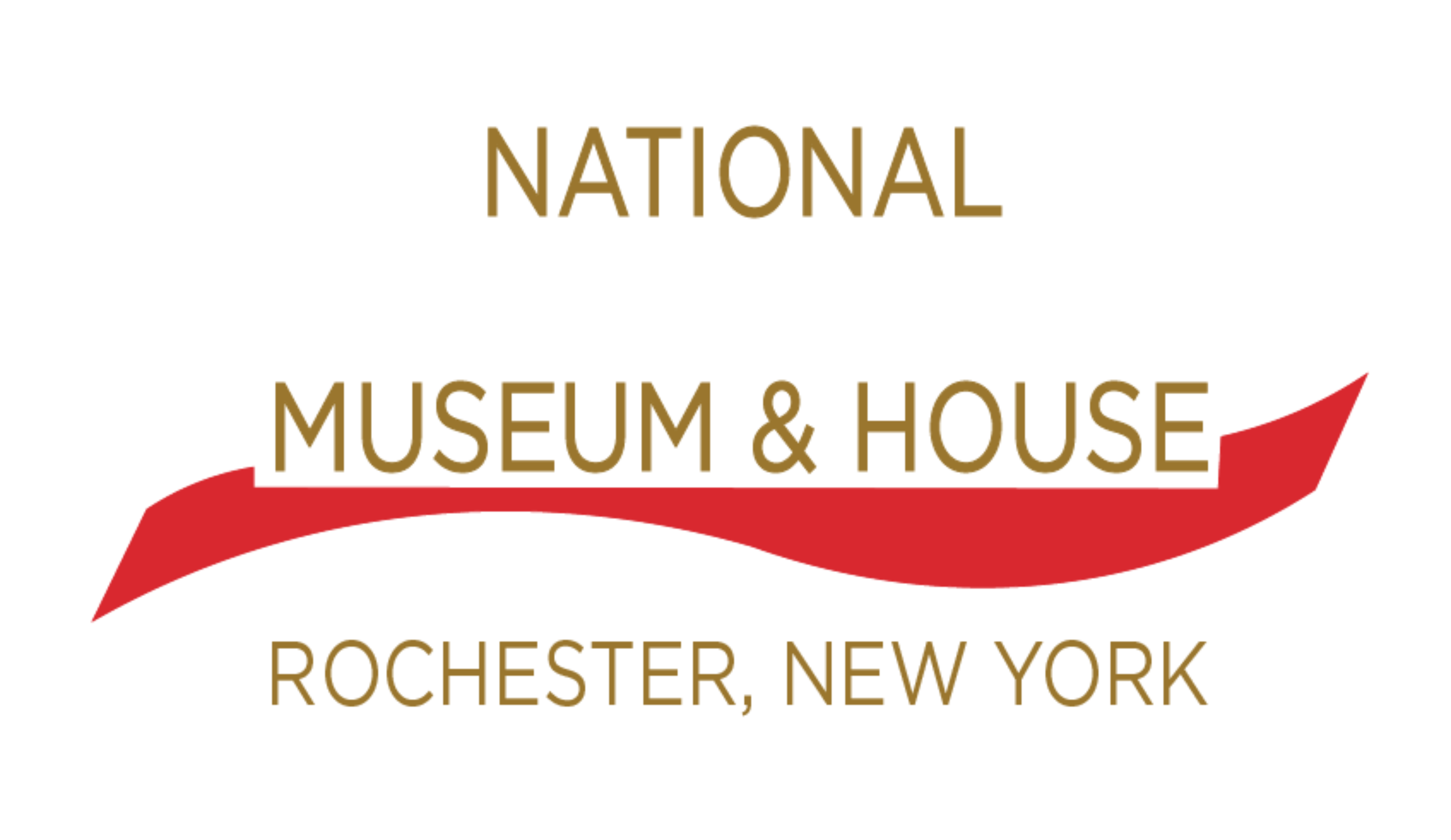

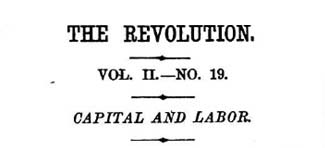
 This past year has been one of triumph and challenge. In so many ways, Susan B. Anthony’s life and work seem more relevant than ever as we head into 2016.
This past year has been one of triumph and challenge. In so many ways, Susan B. Anthony’s life and work seem more relevant than ever as we head into 2016.